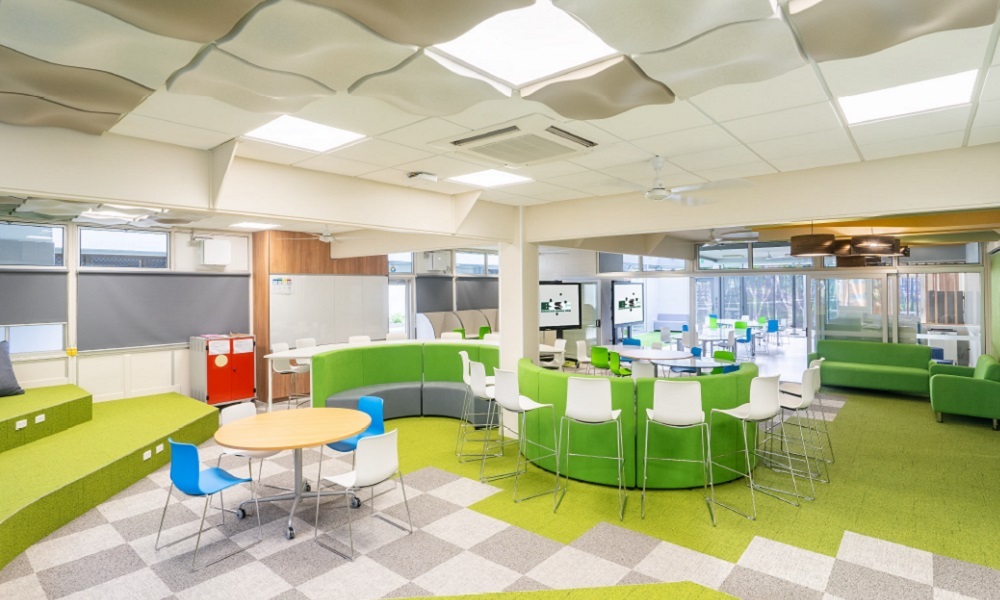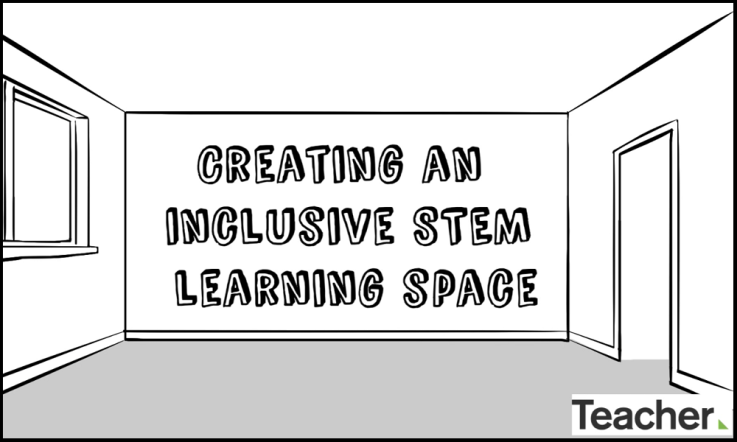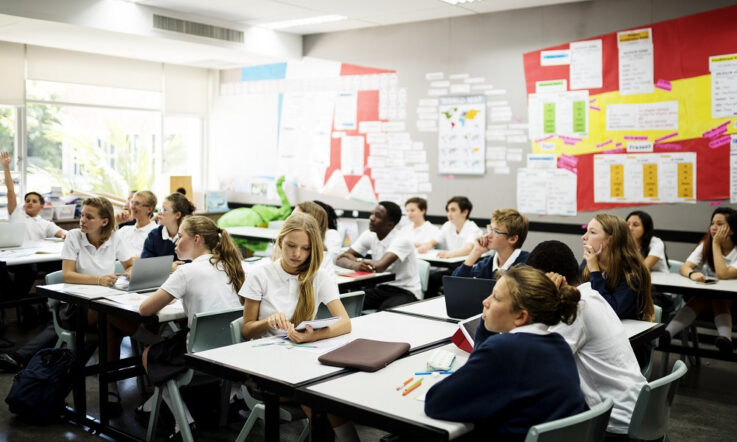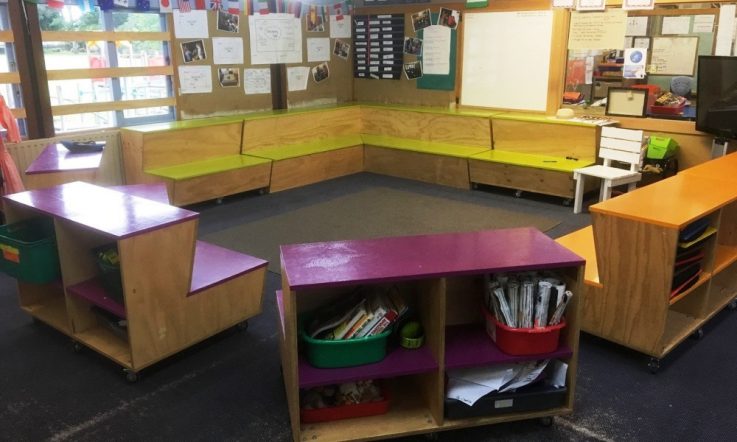Achieving equitable outcomes for all students is the hallmark of a strong schooling system (OECD, 2012). In Queensland, guided by our ‘Every student succeeding’ vision, we aim to achieve an equitable outcome for every student regardless of the challenges they face.
Supporting students who are most at risk requires teaching and leadership at its best. It’s not easy work but it’s the right work.
We have set a goal to decrease the number of early school leavers who do not make a transition to further study or work. Dropping out of school without a pathway has a cost to the young person, their community and the economy. The estimated lifetime cost to the young person alone is nearly AUD $1 million throughout a lifetime (Lamb & Huo, 2017).
Queensland schools have some of the highest Year 12 retention rates in Australia – for example, in 2019 the apparent retention rates for all full-time students in Year 10-12 (all schools) was 88.1 per cent, compared to the national average of 82 per cent (Productivity Commission, 2021). But, we still have too many early leavers who don’t make a transition to further study or work when they leave school – 36.5 per cent according to latest data (Queensland Department of Education, 2020).
In the past few years we have undertaken a range of projects to support students to stay at school, to reconnect them if they disengage, and to support their strong transition to further study or work.
FlexiSpaces evaluation identifying positive trends
One of these new initiatives, FlexiSpaces, is showing real promise. An independent evaluation of the model has identified positive trends which offer valuable insights for all Australian jurisdictions.
FlexiSpaces are in-school flexible learning spaces. They are deeply considered learning environments designed to support children who are disengaged from school and who often face challenging personal circumstances. They promote inclusion and incorporate evidence-based design principles that respond directly to the learning needs of disengaged students.
There are 32 FlexiSpaces at different stages of implementation in Queensland, with a goal to implement 52 by 2022.
While many schools offer off-campus alternative learning settings, FlexiSpaces create a physical space within their school campus to provide the student, their family and the school with the support to reconnect within the mainstream environment. This is less disruptive, and supports a sense of belonging. Students can maintain connection with current activities where possible, and to make a smooth transition back to mainstream learning.
The benefits of an in-school flexible learning response, like a FlexiSpace as compared to off-campus programs, is that FlexiSpaces allow students to:
- remain with their peers and friendship groups;
- keep a regular routine;
- have a strong sense of belonging as part of their school community; and,
- continue their schooling with an uninterrupted curriculum.
Moving a student to an off-campus program sends them a message that they’re not part of their school community, interrupts their curriculum and disrupts their friendships and connections. It also limits the curriculum opportunities that they can access, with off-campus learning settings often having fewer and narrow curriculum choices.
Whilst principals follow operational guidelines, which include details of minimum requirements and setting up a process for identifying students who are disengaged or at risk of disengaging, no two FlexiSpaces are the same. They are designed by the school in collaboration with the school community. Students may range from early secondary, through to the senior years. Students may be experiencing single or multiple barriers to their learning, including family disruption, health issues, mental health issues and other social, emotional or behavioural issues. Some students require early intervention, while other students may require more intensive support.
Importantly, the provision of FlexiSpaces sends a clear message that every student is valued, and that the school will do whatever it takes to support them to stay and succeed in their mainstream school.
The approaches vary in schools, however the FlexiSpace environment is also generally accessed by other classes and student groups across the school. Some schools use the space for co-teaching models; this allows other students to role model learning behaviours to students in the FlexiSpace, while also sharing pedagogy practice across the teaching team.
FlexiSpaces exhibit high-quality approaches marked by high expectations including:
- high-quality and targeted teaching focused on reconnecting students and improving their outcomes;
- access to the Australian Curriculum on the same basis as their peers. (Other school-delivered alternative responses often provide students access to VET courses, or numeracy and literacy programs outside the Australian Curriculum. FlexiSpaces are about high quality curriculum offerings, providing differentiation to respond to student needs, rather than providing ‘watered down’ curriculum options);
- a high-quality built environment that promotes a message of value and facilitates flexible learning opportunities;
- multi-disciplinary approaches in collaboration with other agencies such as Child Safety, Youth Justice, and Communities (where required);
- strengthened school capability in creating inclusive and flexible learning environments that cater to the needs of all their students;
- strong engagement with parents as important partners;
- increased student agency and responses to student voice and needs.
A series of video discussions around the benefits of FlexiSpaces, implementation and signature practices, featuring principals from the pilot schools, is available at QELi TV.
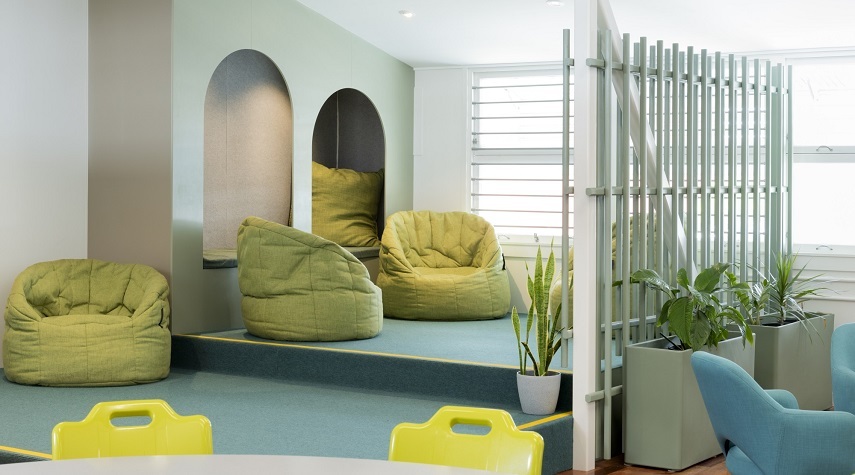
[A low-sensory learning area. Image: Smoke Creative]
Early evidence on effectiveness
The Queensland Department of Education commissioned an independent evaluation of the first two FlexiSpace pilots during 2018-19, and a further evaluation of four of the next tranche of schools during 2020. It provides early evidence that FlexiSpaces have been effective.
The independent evaluation has showed that FlexiSpaces are helping schools to disrupt students’ downward trajectories. For example, in one 2020 cohort: 73 per cent of students had improved or maintained their academic result in English (45 per cent improved); 83 per cent in Maths (75 per cent improved); and 73 per cent in Science (45 per cent improved).
They’re also a powerful tool to shift students’ perceptions of themselves as learners. For example, one cohort of students showed 100 per cent agreement with the following statements: ‘I think I will graduate from high school’ (up from 66.7 per cent prior to FlexiSpace); ‘I think school is important for reaching my future goals’ (up from 88.9 per cent); ‘my teachers motivate me to learn’ (up from 88.9 per cent).
There has been a positive impact on student behaviour: 80 per cent of students improved or maintained their behaviour assessment in English classes; 85.7 per cent in Maths; and 84 per cent in Science.
Overall attendance improved or remained relatively stable and the majority of staff and parents surveyed were supportive of the FlexiSpace.
It should be noted that due to the small sample size (114), and wide variability in student needs and ‘starting points’, ongoing review of the data is needed to identify further patterns and impacts on student outcomes.
Sharing common success factors
FlexiSpace principals are evaluating the success factors in their schools and sharing these findings with others. This work will provide important insights into what can be done across Queensland to improve outcomes for all students.
Although each space is designed for a specific school context, there are some common success factors that have already been identified. These approaches are not new and research confirms the power of these factors in lifting outcomes for students.
Principal leadership is central to equitable outcomes
The research is clear: principal leadership is central to a school’s success in identifying and meeting the needs of all students. Effective school principals lead a school-wide commitment to a moral purpose to see every student learning successfully and working toward their potential. This commitment drives and guides their work (Masters, 2018).
This is no different in FlexiSpaces. These pilots suggest establishing and leading a FlexiSpace requires a deep-seated moral purpose. It also requires courage and precision. Courage is required to lead new ways of responding to students who are not thriving. Precision is required to undertake skilled analysis of the data, and then to target strategies that work.
Everyone benefits when principals collaborate on a shared problem
Our FlexiSpace principals are connected with other FlexiSpace principals. They reflect and share insights regularly across Queensland through face-to-face and virtual meetings. Many visit other FlexiSpace schools to observe practice to strengthen capability and deliver better outcomes for their students who are not currently thriving in the school. FlexiSpace principals are also building collaboration inside their schools, using strategies such as shadowing, team teaching and team planning to build skills in the FlexiSpace and across the school.
A high-quality built environment makes a difference
FlexiSpace principals are provided a one-off grant of AUD $200 000 to refurbish a space in their school. The evaluation, and reports from the school demonstrate the impact of the aesthetics of this refurbished environment. The built environment sends cues to students about their value. Light, space, high-quality furnishings, flexible configurations, access to outdoor areas, and space for relationships building provide students with a sense of belonging and comfort (Osbourne, 2016). FlexiSpaces show what a difference a relatively modest investment can make to a learning environment.
Approaches are marked by high expectations
Educational researchers often talk about the ‘tyranny of low expectations’. FlexiSpaces are marked by high expectations. This is evident in a full timetable and the availability of rich curriculum experiences being made available to all students. Pedagogy is engaging, differentiated to meet the needs of all students, and aims to stretch students to their next level. These schools believe in the power of parents, and find ways to partner positively with parents – even those who have been previously hard to engage.
FlexiSpaces are one of a range of strategies in the school
FlexiSpaces are not a magic solution. They’re one of a range of approaches taken by the school to closely monitor the wellbeing and engagement of every student and to respond to student needs.
Inclusion is at the heart of the approach
Other types of responses may be seen as a segregated or separate setting where students are assigned according to a particular set of needs, or if they are displaying particular behaviours. Research shows that this kind of segregation leads to marginalisation and compounds disadvantage (OECD, 2012 & 2019).
This is not what FlexiSpaces are about. Students who access the FlexiSpace continue to maintain their engagement with the rest of the school community. This is achieved through maintaining the same routines, access to rites of passage and school events. The FlexiSpace is located centrally within the school’s campus, with other student groups accessing the space for learning opportunities. This builds an expectation and understanding across the whole school community that the FlexiSpace is a place for learning, just like any classroom.
Gathering insights for future practice
FlexiSpaces are exciting learning spaces where there are high expectations and positive approaches to supporting students who may not be thriving in school. The concept is underpinned by an inquiry mindset where practices are informed by evidence.
FlexiSpace principals and their teams will continue to ensure their approaches are monitored and reviewed and the Queensland Department of Education is collating these insights. This evidence-based approach provides important insights for future practice and school improvement across other schools in Queensland and potentially within other Australian jurisdictions.
References
Lamb, S., & S. Huo. (2017). Counting the costs of lost opportunity in Australian education. Mitchell Institute Report No. 02/2017. Mitchell Institute.
Masters, G. N. (2018). Principal Performance Improvement Tool. Australian Council for Educational Research (ACER). https://research.acer.edu.au/tll_misc/30
OECD. (2012). Equity and Quality in Education: Supporting Disadvantaged Students and Schools. OECD Publishing. https://doi.org/10.1787/9789264130852-en
OECD. (2019). Changing the Odds for Vulnerable Children: Building Opportunities and Resilience. OECD Publishing. https://doi.org/10.1787/a2e8796c-en
Osbourne, M. (2016) Learning environments, belonging and inclusion. CORE Education White Paper. https://core-ed.org/assets/PDFs/Learning-environments-belonging-and-inclusion.pdf
Productivity Commission. (2021). Report on Government Services 2021. Part B, section 4: School education. Australian Government. https://www.pc.gov.au/research/ongoing/report-on-government-services/2021/child-care-education-and-training/school-education#downloads
Queensland Department of Education. (2020). Next Step, 2020 Early School Leavers Survey. https://qed.qld.gov.au/our-publications/reports/statistics/Documents/esl-statewide-summary.pdf (PDF, 466 KB) Queensland Government.
Schleicher, A. (2018). World Class: How to Build a 21st-Century School System, Strong Performers and Successful Reformers in Education. OECD Publishing. https://doi.org/10.1787/9789264300002-en
Thinking about your own school context: What strategies do you have in place to reconnect disengaged students with school? How are parents, carers and families a part of this process? How do you support students’ successful transition to further study or work?
